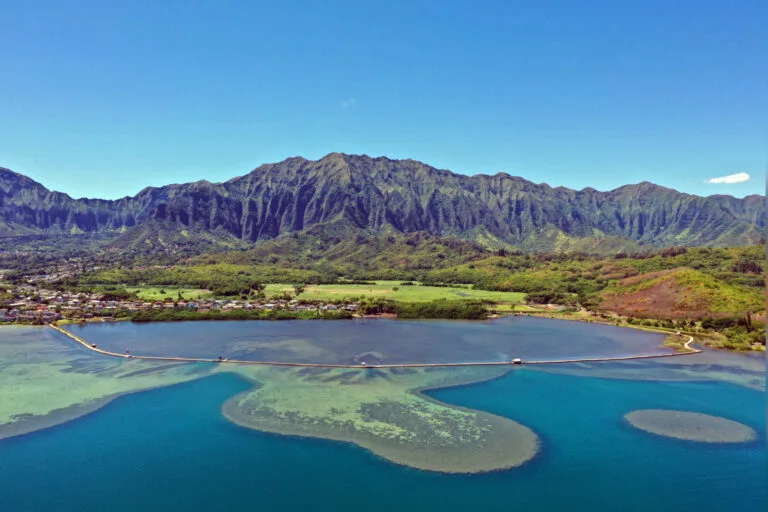- The loko i’a system of native fishponds in Hawai‘i has for generations provided sustenance to Indigenous communities, supported fish populations in surrounding waters, and generally improved water quality.
- These benefits, long understood by native Hawaiians, have now been confirmed by scientists in a new study that looked at the restoration of one such fishpond.
- Unlike commercial fish farms, loko i‘a thrive without feed input and need little management once established — aspects that highlight the holistic thinking and values-based management behind them.
- The study authors say the finding is another step toward communicating Indigenous knowledge to support governmental decision-making, part of wider efforts across the archipelago to weave Indigenous and Western ways of knowing to heal both ecosystems and communities.
For generations, native Hawaiians have understood that their aquaculture systems, fishponds known as loko i‘a, serve as nurseries that seed fish populations in surrounding waters. For the first time, a team of scientists from the Hawaiʻi Institute of Marine Biology (HIMB) have modeled this feat of Indigenous science in a study.
“We are using science to translate ‘ike kupuna, or Indigenous knowledge, into policy,” said study co-author Kawika Winter, an ecologist at HIMB and He‘eia National Estuarine Research Reserve (NERR). “The value of this paper is that it’s one of the first, if not the first, to really show that there are ways to do aquaculture in ways that benefit the system around it.”
In partnership with He‘eia NERR and Paepae o He‘eia, a nonprofit organization dedicated to stewarding the He‘eia loko i‘a, an ancient Hawaiian fishpond enclosing 36 hectares (88 acres) of brackish water, the team simulated different restoration scenarios in ‘Kāne‘ohe Bay on O‘ahu Island based on a simplified food web. The study found that restoring more of the bay into fully functional loko iʻa would grow fish populations not just within the ponds, but across the bay.



deleted by creator